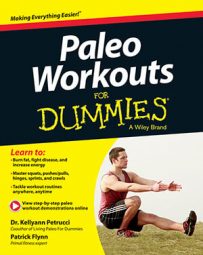Ever wonder what you should do immediately before and after exercise? The answer is to move. Injury is largely the result of movement dysfunction, asymmetries, restrictions, and, well, general stupidity. Exercises such as crawling, rolling, and Turkish get-ups will help with the first three. As for the last one, all you can do is live by the following rule: If something doesn’t feel right, don’t do it!
Don’t ever go into pain when exercising. Don’t ever go into pain when moving. Don’t ever go into pain, ever. The only place you should go when you have pain is the doctor’s.
If you were a cave man constantly on the move, you wouldn’t need to prep your body before any vigorous activity, because as a creature that lives dynamically, you’d always be ready for exertion. A lion, too, for example, doesn’t need to stretch before sprinting and tackling its prey because the lion is always ready.
People, today, however, are far removed from the cave man or the lion. People, on average, sit more than they stand, and a hunt usually involves little more than shimmying through the cafeteria lunch line. Therefore, for your own safety, take time (ten minutes is usually plenty) before (and after) each training session to explore movement and to prep your body for exercise.
Preparing before exercise
Don’t get terribly excited about stretching before exercising or horribly upset if you skip stretching before exercise altogether. It’s not that big of a deal, especially if you’ve been on the move regularly and have taken at least five minutes or so to practice crawling, rolling, and/or Turkish get-ups.
Not too many people truly get all that flexible through stretching anyway, and strong evidence suggests that prolonged static stretching before exercise may inhibit your ability to perform optimally. Muscle suppleness, like movement, is linked to the nervous system; in other words, it’s your ability to relax. Rarely will yanking at muscles improve your long-term flexibility, because rarely does such a practice promote a state of relaxation.
The key to flexibility is to stretch gently at first and to discover how to relax yourself into a greater range of motion. Be patient and let it come — don’t force it.
Relaxing after exercise
Although your priority should always be to improve movement quality, gentle stretching after exercise can still be beneficial.
When stretching after exercise (and even before), go to the beginning of the stretch and hold it there, whatever the stretch may be. Hold it for as long as it takes for you to feel relaxed, to comfortably move into a deeper range of motion. This could take 30 seconds, 10 minutes, or it may not even happen at all. Don’t worry about it.
Just don’t push too far too soon; otherwise, you’ll tense up and defeat the purpose of the stretch, which is to train your body to relax into a greater range of motion.

